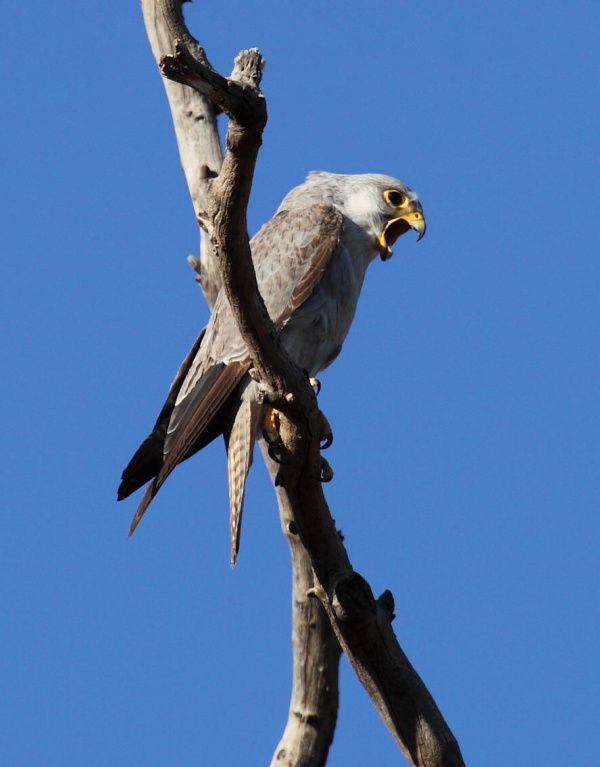Facts About Grey falcon
The grey falcon is a medium-sized bird of prey native to Australia and is regarded as one of the country's rarest species. Classified as Vulnerable, its distribution is scattered throughout Australia. John Gould first described its taxonomy in the 19th century, naming it "hypoleucos" derived from Ancient Greek. The grey falcon is easily identifiable by its grey upper feathers, white underbelly, and distinctive yellow cere. Adult falcons typically measure between 30 to 45 cm in length. Their call consists of a series of hoarse, chattering sounds.
Grey falcons are commonly found in Australia’s arid inland regions, favoring habitats such as Triodia grasslands, Acacia shrublands, and sparsely wooded arid areas. They are often seen in family groups and have always been rare, with most sightings occurring in dry zones with low rainfall. Their diet mainly comprises other birds, but they also hunt small mammals, reptiles, and invertebrates.
The grey falcon breeds once a year, usually constructing nests in tall trees along watercourses in dry inland areas. Due to habitat changes, their breeding range has diminished, although they may nest twice a year if conditions are favorable. Conservation efforts are crucial as their habitats are threatened by grazing and farming.
The grey falcon is listed as Vulnerable on international conservation lists and is considered endangered under Australian law. Various states in Australia provide additional protection, classifying the species as threatened or rare under different conservation acts. The current population is estimated to be around 1,000 breeding pairs, and ongoing conservation efforts are essential to ensure their survival in the wild.
